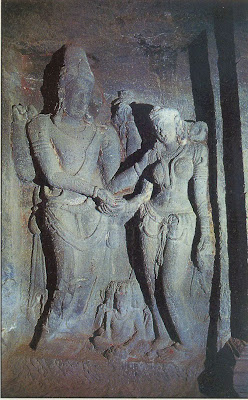Retrovirus: cancer cell formation

Retro viral insertion can convert a proto-oncogene, integral to the control of cell division, into an oncogene, the agent responsible for transforming a healthy cell into a cancer cell. An acutely transforming retrovirus (shown at top), which produces tumours within weeks of infection, incorporates genetic material from a host cell into its own genome upon infection, forming a viral oncogene. When the viral oncogene infects another cell, an enzyme called reverse transcriptase copies the single-stranded genetic material into double-stranded DNA, which is then integrated into the cellular genome. A slowly transforming retrovirus (shown at bottom), which requires months to elicit tumour growth, does not disrupt cellular function through the insertion of a viral oncogene. Rather, it carries a promotor gene that is integrated into the cellular genome of the host cell next to or within a proto-oncogene, allowing conversion of the proto-oncogene to an oncogene.


Comments